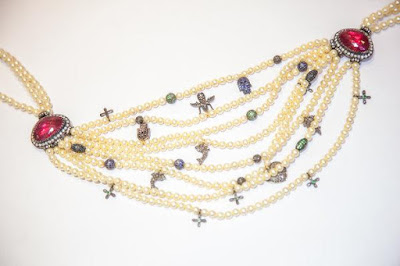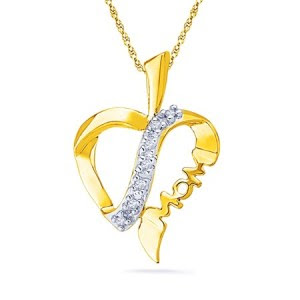Custom Jewelry, Mini Size
Tarang Arora, president of Amrapali Jewels,
described how he pored over a set of charcoal and colored pencil
sketches of an anklet and a headpiece for an 11-year-old girl. He said
it was late, well past store hours, and his many workers, including 12
designers, had left the 3,500-square-foot showroom for the day.
The
clients, a prominent family in Jaipur, wanted a matha patti (an
Indian-style headpiece), a paayal (a thin anklet with bells) and a
necklace, all to fit the theme of a wedding they were about to attend.
“The family told me which designer would make the bride’s clothes,” he
said, “and we started working on the jewelry designs that would match
the sensibility of the clothing designer.”
The
pieces were fashioned from 22-karat gold set with diamonds, rubies and
emeralds, all high-quality stones cut in a rose style with a flat
bottom. That way, he said, they would possess all the sparkle possible
without any extra weight, making them comfortable for the child to wear.
The
task, as it turned out, took more than three months to complete. “The
process of finalizing the design itself took about a month and a half,”
Mr. Arora said.
Then
some of his more than 1,200 artisans cut the rubies into Amrapali’s
customary lotus shape and enameled their backs. (The use of enamel and
stonework in Indian jewelry is inspired by the Mughals, whose chief
motifs included flowers and birds.)
Bespoke jewelry is a growing part of the
$257 billion global jewelry market, whose main buyers are in China and
India. And sales of custom-made pieces for children, especially in
India, where elaborate jewelry has long been prized, are becoming a
significant part of that sector.
Mr.
Arora said that the number of parents and grandparents placing orders
with him has increased in the past few years, with some spending as much
as $55,000 at a time.
India is a
polytheistic society, so many parents want charms like those of baby
Krishna and other religious symbols like the Om crafted in various
metals and precious stones, mostly 24-karat gold, the unequivocal symbol
of prosperity in India. Anklets, gold and silver spoons, and amulets
with precious stones also are popular.
Some of these custom pieces are presented during the Godh Bharai
ceremony, a traditional baby shower; the term also is used for the area
between the mother’s arms where the child plays.
London’s Saville Row, jewelers face some
unusual factors when creating jewelry for children, such as setting
stones with precision so they don’t fall out easily or become choking
hazards.
“There were some challenges
when we finished the bridal jewelry, and these included the fall of the
piece on the neck because the child was growing,” Mr. Arora said. “It
wasn’t something which created a lot of stress for the client or us, but
we still wanted to rectify it before the final delivery.”
The number of jewelry companies with
children’s collections is small but growing — for example, Dinh Van, the
French company whose motto is “the free spirit of French jewelry,” has a
bespoke children’s jewelry division within the company.
The New York-based jeweler Aaron Basha
said the idea of adorning children isn’t quite as popular in the United
States as it is in in the Middle East or Asia, adding, “Little girls
with pierced ears isn’t quite a thing in the United States.”
Yet
recently, he said, a mother from Qatar spent $80,000 in his shop on
charm bracelets and safety pins set with diamonds for her newborn.
Since Mr. Basha opened his jewelry house in 1950, he has become
particularly well known for his charms in the shape of baby shoes.
Typically made of 18-karat gold, the charms are not bespoke pieces but
can be engraved for an easy personalization. “Some clients want a birth
date on the back of the shoe, yet others the baby’s name; jewelry is
very emotional and has strong family ties,” he said.
He also has an option for mothers to
order matching charms for themselves and their children. “You know how
much mothers love to match their kids,” he said with a laugh.
Gold
has increased in value in recent months, prompting many jewelers to
increase their prices as a result. But the market for children’s pieces
does not seem to be affected, some say, as they are considered
sentimental pieces rather than investments.
“We all have a different perception of money,” the California jeweler Michael Merritt
said. “For some people, a $10,000 diamond engagement ring is a
beautiful thing, so folks spending $3,000 to $5,000 for a 3-year-old
doesn’t seem too crazy.”
Mr. Merritt,
who has a showroom in Pasadena, Calif., said there has been a definite
increase in the number of people ordering children’s jewelry in the past
six to eight years. He added that he had never made a conscious effort
to market himself as a designer of bespoke children’s jewelry; it just
happened.
He said he sells a lot of children’s
earrings, which he crafts to client specifications, as well as diamond
and pavé diamond bracelets and cord bracelets that start at $2,500.
Oddly, he said, birthstones for children are not as popular as pieces in white and yellow gold.
If you are in search of titanium rings for men and want to know more about it then please contact us in the comment section.
If you are in search of titanium rings for men and want to know more about it then please contact us in the comment section.




Comments